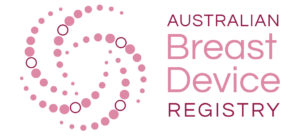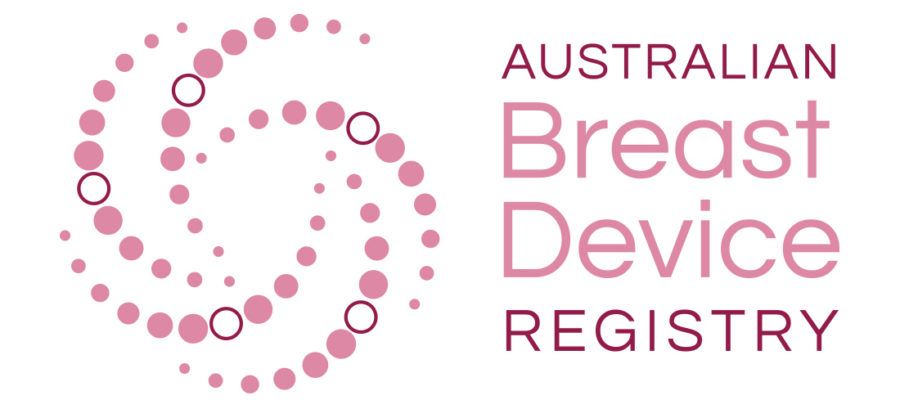Breast Augmentation
Contents
What is breast enlargement surgery?
Breast enlargement surgery, also referred to as augmentation mammaplasty, is a surgical procedure performed by our Specialist Plastic Surgeons in Perth. Its aim is to increase breast size through the use of implants. This procedure can also address minor breast sagging (ptosis) and increase breast firmness. In certain cases, such as breast reconstruction after mastectomy, a similar procedure can be carried out.
Breast augmentation surgery can be sought for either cosmetic or medical reasons, with the latter subject to strict Medicare eligibility criteria. It’s important to note that the necessity of the procedure for medical purposes, such as correcting breast asymmetry, should be determined based on these criteria.
For some patients, a breast lift may be recommended alongside breast augmentation to achieve optimal results. This combined procedure is known as an augmentation mastopexy.
What factors may influence the consideration of augmentation mammaplasty?
Breast implant surgery may be a suitable option if you perceive your breasts as smaller than average or disproportionate to your body size. It can also address concerns such as breast asymmetry or decreased size after pregnancy. It is important to understand that natural breasts, including nipples and areolas, often exhibit slight variations in size and shape, which is normal.
Is a breast augmentation right for me?
When considering breast surgery, it is crucial to schedule a consultation with a Specialist Plastic Surgeon. This initial step ensures open communication about your appearance goals and expectations. Your surgeon will conduct a comprehensive examination and attentively listen to and address your concerns. They will then discuss the most appropriate options for your individual circumstances.
How is breast enlargement surgery performed?
There are currently several techniques for breast augmentation . They involve the insertion of a safe silicone gel implant either behind the breast tissue or behind the pectoral muscle. The implant is inserted through a small incision either under the breast (Inframammary technique) or around the nipple (Periareolar technique). Your surgeon will determine which approach would be most appropriate.
Breast augmentation in Perth is performed in an accredited hospital as a day case or alternatively with a short hospital stay. You should discuss the details of your recovery with your surgeon.

As part of your procedure, your breast implants will be registered with the Australian Breast Device Registry – a nationwide Australian Government initiative established to monitor the safety and quality of procedures involving breast implants. Participation in the Registry is at no cost to the patient.
Are there any risks and complications of breast enlargement surgery?
All plastic, cosmetic and reconstructive surgical procedures come with risks and potential complications. To ensure successful surgery, it is crucial to understand and minimise these risks. Whilst all measures are taken to mitigate risks, some risks are unavoidable.
All information on this page is general in nature – your Specialist Plastic Surgeon will discuss the specific risks and complications pertinent to your individual surgical procedure during your consultation. General risks for surgery are listed here.
Specific risks related to breast augmentation surgery include, but are not limited to:
- Fluid accumulation: After the surgery, there is a possibility of fluid accumulating around the breast implant. This condition, known as seroma, may require additional procedures to drain the fluid. To prevent any fluid or blood accumulation, thin tubes called a drains may be temporarily placed under the skin while you’re in hospital.
- Fat necrosis: This is a rare complication that can occur when fatty tissue dies. It can cause hard lumps under the skin, but it is usually not a serious problem.
- Changes in breast and nipple sensation: Breast augmentation may lead to temporary or permanent changes in breast and nipple sensation. Some individuals may experience increased sensitivity, while others may notice reduced sensation.
- Numbness: Temporary or permanent areas of numbness in the breasts and surrounding areas can occur as a result of nerve damage during the surgery. It is important to discuss this possibility with your surgeon prior to the procedure.
- Skin wrinkling: In some cases, wrinkling of the skin over the breast implant may occur. This can be more common in individuals with thin skin or those who have chosen larger implants.
- Capsular contracture: Capsular contracture is a complication where scar tissue forms around the implant, causing it to become firm and lose its shape and softness. This can result in discomfort and may require additional surgery to correct.
- Implant-related issues: There are various implant-related risks, including inappropriate implant size, implant rupture, and deflation. These issues may necessitate revision surgery to replace or remove the implant.
- Breast asymmetry: Breast augmentation can sometimes result in unevenness or asymmetry of the breasts. This can occur due to variations in healing, tissue response, or implant placement.
- Calcium deposits: In some cases, calcium deposits may develop in the scar capsule around the breast implant. These deposits are usually harmless but may require monitoring or treatment.
- Granulomas: Granulomas are lumps that can form in the local lymph node tissue due to leaking silicone. Although rare, they can occur and may require medical attention.
- Breastfeeding difficulties: Breast augmentation may potentially affect breastfeeding, leading to reduced milk supply. It is important to discuss this concern with your surgeon before undergoing the procedure, especially if planning to have children in the future.
- Breast cancer screening challenges: Breast implants may interfere with the effectiveness of mammograms in detecting breast tissue abnormalities, including tumors. It is crucial to inform healthcare providers about the presence of implants to ensure proper screening techniques are used.
- Implant movement: In some cases, breast implants may shift from their original position over time. This can result in asymmetry or discomfort and may require corrective surgery.
- Additional surgeries: In the event of complications or unsatisfactory outcomes, further surgeries may be necessary to address any issues. Breast implants are not lifetime devices and may need to be replaced after approximately 10 to 15 years.
In recent years, there have been claims suggesting a potential association between implants and the development of connective-tissue diseases such as rheumatoid arthritis, lupus erythematosus, scleroderma, and other autoimmune conditions. While some studies have indicated a slight increase in risk, many medical investigations have not established a definitive connection between implants and these health issues. It is important to note that a certain proportion of women in the general population may develop these diseases, whether they have implants or not. Therefore, while the possibility of developing connective-tissue and autoimmune diseases exists, it should be considered as a remote likelihood.
There are rare incidences of what is known as Breast Implant Associated-Anaplastic Large Cell Lymphoma (BIA-ALCL) – please click here for more information.
In rare cases, women with implants have reported experiencing general symptoms that include joint pain, overall body aches, swollen lymph glands, persistent fatigue, increased susceptibility to colds and flu, hair loss, skin rashes, headaches, memory issues, nausea, muscle weakness, irritable bowel syndrome, and sporadic fever. Although a correlation between these symptoms and autoimmune disorders has been suggested, it has not been definitively proven.
Will the breast augmentation procedure leave any scars?
Although scars are a natural outcome of any surgical procedure, your surgeon will prioritise minimising their visibility and make every effort to ensure that your scars remain inconspicuous. Typically, the scars resulting from breast augmentation are only a few centimeters in length and strategically placed to be less noticeable. We understand that some patients may have a tendency to develop keloid or hypertrophic scars, and we encourage you to inform your surgeon if you are aware of this tendency in yourself. Your surgeon will take this into consideration during the procedure to optimise your results and minimise any potential scarring.
What results can I expect from a breast enlargement?
The primary objective of your surgery is to increase your breasts to a size that compliments your overall physique. Typically, a C-D cup size is achieved. It is important to note that individual outcomes may vary. Your surgeon will assess your individual circumstances and provide professional advice on the attainable results based on your specific case. Please be aware that the expectations should be reasonable and aligned with the natural possibilities of the procedure.
When can I resume normal activities following the breast implants procedure?
You should typically expect to resume your normal routine within 2-3 weeks after the breast implants procedure, although it is recommended to wait a little longer before engaging in strenuous exercise. The timing of returning to work or your regular activities varies for each individual, and it is best to consult your surgeon for personalised advice. To aid in the healing process and minimise swelling, you will be required to wear post-surgical compression garments for approximately six weeks.
It is important to emphasise that every patient’s recovery process requires sufficient time, support, and appropriate postoperative care. Healing abilities and pain tolerance may vary among individuals, leading to differences in the duration of recovery and the ability to participate in various activities.
How much do these procedures cost?
Breast augmentation surgery for cosmetic purposes starts from $15,990 (including GST) for our All-inclusive breast augmentation package and includes:
- Breast augmentation performed by one of our Specialist Plastic Surgeons in Perth.
- Surgery performed in a fully-accredited premium hospital, under general anaesthetic administered by a fully-qualified ANZCA anaesthetist.
- Smooth, round, silicone implants provided by one of the world’s leading breast implant manufacturers, Mentor (Johnson & Johnson).
- One all-inclusive price that covers your Specialist Plastic Surgeon’s fee, Anaesthetist’s fee, all hospital and theatre fees, the cost of your implants and post-operative care.
Please note pricing does vary from case to case, particularly for patients who have had previous breast surgery, who are better suited to anatomical (teardrop) implants, who require a breast lift (mastopexy) or other breast surgery procedure in addition to the augmentation, or who require an overnight hospital stay.
Please click here for full details on our All-inclusive breast augmentation package. For more information on our All-inclusive breast augmentation plus breast lift package, please click here.
To discuss your surgical options, please contact us online or call us on (08) 9380 0333 and one of our medical secretaries can provide you with more information.
Where can I find more information?
The Australian Society of Plastic Surgeons (ASPS) website is a helpful and reliable source of information online. Their website is an excellent place to research a range of surgical procedures and non-surgical treatments, and view video animations.
The Therapeutic Goods Administration (TGA) breast implant hub has several documents regarding breast implants, covering various subjects such as Breast Implant Associated-Anaplastic Large Cell Lymphoma (BIA-ALCL), consumer inquiries, and related matters. Utilising a search engine can also be beneficial in finding relevant information on these topics.









